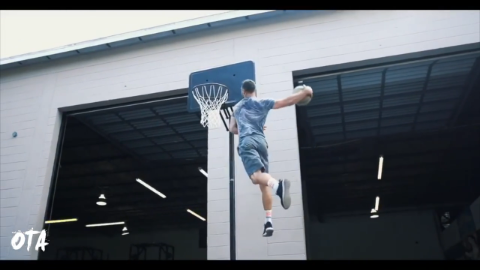Creating a Plyometrics Program (Phase 1)
When it comes to training for more bounce, plyometrics are king. But, from my point of view, many athletes go about their plyometric training the wrong way. They see the flashy plyometrics on Instagram and YouTube and want to jump right into training that way instead of building a solid base that will help them jump much higher.

To clear the air, I’m going to share my periodization for plyometric training, starting with phase one, the absorption phase.
Force Absorption
This is an overlooked aspect of plyometrics because it’s not very sexy. You can’t show off your height on a depth jump.
Despite what most think, your ability to absorb force is the foundation of your jumping ability. As such, it’s the first thing my athletes, and even myself, focus on first when coming back to plyometric training.
Unilateral Plyometrics
Unilateral, or single-leg, plyometrics are a great starting point for an explosive foundation. Most athletes struggle on one-leg, and as such, doing single-leg plyos builds stability, has high neurological demands, and obviously, your proficiency on one leg carries over to your ability to jump on both legs.
When I train unilateral plyometrics, I train in a vertical, horizontal, and lateral plane of motion. These movements are designed to be basic. The focus is on good mechanics as well as safe and efficient landing. In the next phase, you’ll progress these movements.
Connected Jumps (Low Level)
There are three big energy contributors from the lower extremity in the vertical jump: the ankle, knee, and hip. That being the case, in the first phase of my plyometric program, I want to take time to emphasize, and build up, each of those points.
This will be done through bilateral, connected jumps, usually for time. Some of my favorites for this are pogo jumps, low squat jumps, and regular squat jumps that target the ankle, knee, and hip respectively.
These moves really teach the athlete how to absorb force and utilize it in an efficient manner.
Absorption
The eccentric portion of a movement is about generating as much energy as possible, preparing you to utilize it. Same with force absorption in plyometrics.
I work on this ability through movements like depth jumps that teach the athlete’s lower extremities to become like a shock absorber so that in the end, they can use the energy they’ve generated to propel themselves down the field or court.
More Lessons on How to Jump Higher
These are the three aspects of plyometric training I focus on during the first phase of a general plyometric program. In the future, I’ll write about phase two and phase three.

For now, if you want to learn my complete plyometric progressions, plus a bunch of other vertical jump tips,
Check out my FREE Advanced Vertical Series. You can join the thousands of other athletes who are jumping higher by clicking the link below:
![Create a Plyometric Training Program [Complete Guide]](https://blog.overtimeathletes.com/wp-content/uploads/2019/02/plyometric-training-template.png)


